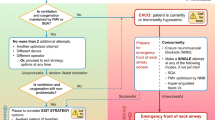Abstract
Background/aims
Bronchiolitis is the most common lower respiratory illness that characteristically affects the children below 2 years of age accounting about 2–3% of patients admitted to hospital each year [1,2,3,4]. We compared the effect of racemic epinephrine (RE) and 3% hypertonic saline (HS) nebulization on the length of stay (LOS) in the hospital.
Methods
We looked at the infants with moderate bronchiolitis, from October 2013 to March 2014. Out of eighty cases, 16 in HS and 18 in RE groups were enrolled. At the time of admission, 0.2 ml of RE added to 1.8 ml of distilled water was nebulized to RE group, as compared with 2 ml of 3% HS in nebulized form. RE was re-administered if needed on 6 h in comparison with 3% HS at the frequency of 1 to 4 h.
Results
One infant from RE group and three infants from HS group were excluded due to progression towards severe bronchiolitis. The LOS in RE group ranged between 18 and 160 h (mean 45 h), while in HS group, LOS was 18.50–206 h (mean 74.3 h). The LOS was significantly short in RE group (p value 0.015) which was statistically significant.
Conclusion
Racemic epinephrine nebulization as first-line medication may significantly reduce the length of hospital stay in infants with moderate bronchiolitis in comparison with nebulized HS.
Similar content being viewed by others
References
American Academy of Pediatrics Subcommittee on Diagnosis and Management of Bronchiolitis (2006) Diagnosis and management of bronchiolitis. Pediatrics 118(4):1774–1793
American Academy of Pediatrics (2014) Clinical practice guideline: the diagnosis, management, and prevention of bronchiolitis. Pediatrics 134(5):e1474–e1502. https://doi.org/10.1542/peds.2014-2742
Bush A, Thomson AH. Acute bronchiolitis. BMJ. 2007;335(7628):1037-41. 3
Zorc JJ, Hall CB (2010) Bronchiolitis: recent evidence on diagnosis and management. Pediatrics. 125(2):342–349
Mansbach JM, McAdam AJ, Clark S et al (2008) Prospective multicenter study of the viral etiology of bronchiolitis in the emergency department. Acad Emerg Med 15:111–118
Friedman JN, Rieder MJ, Walton JM, Canadian Paediatric Society, Acute Care Committee, Drug Therapy and Hazardous Substances Committee (2014) Bronchiolitis: recommendations for diagnosis, monitoring and management of children one to 24 months of age. Paediatr Child Health 19(9):485–498
Gadomski AM, Scribani MB (2014) Bronchodilators for bronchiolitis. Cochrane Database Syst Rev 6:CD001266
Bronchiolitis in children: diagnosis and management. NICE guideline [NG9] Published date: June 2015
Leidy NK, Margolis MK, Marcin JP et al (2005) The impact of severe respiratory syncytial virus on the child, caregiver, and family during hospitalization and recovery. Pediatrics. 115(6):1536–1546
Lapillonne A, Regnault A, Gournay V, Gouyon JB, Benmedjahed K, Anghelescu D, Arnould B (2013) Moriette G Development of a questionnaire to assess the impact on parents of their infant’s bronchiolitis hospitalization. BMC Health Services Research 13:272
Diaz-Caneja A, Gledhill J, Weaver T, Nadel S, Garralda E (2005) A child’s admission to hospital: a qualitative study examining the experiences of parents. Intensive Care Med 31:1248–1254
Graves JK, Ware ME (1990) Parents’ and health professionals’ perceptions concerning parental stress during a child’s hospitalization. Child Health Care 19:37–42
Skjerven HO, Hunderi JO, Brügmann-Pieper SK et al (2013) Racemic adrenaline and inhalation strategies in acute bronchiolitis. N Engl J Med. 368(24):2286–2293
Hartling L, Bialy LM, Vandermeer B, Tjosvold L et al (2011) Epinephrine for bronchiolitis. Cochrane Database Syst Rev. 6:CD003123
Anil AB, Anil M, Saglam AB, Cetin N, Bal A, Aksu N (2010) High volume normal saline alone is as effective as nebulized salbutamol-normal saline, epinephrine-normal saline, and 3% saline in mild bronchiolitis. Pediatr Pulmonol. 45(1):41–47
Plint AC, Johnson DW, Patel H et al (2009) Epinephrine and dexamethasone in children with bronchiolitis. N Engl J Med 360(20):2079–2089
Tal G, Cesar K, Oron A et al (2006) Hypertonic saline/epinephrine treatment in hospitalized infants with viral bronchiolitis reduces hospitalization stay: 2 years experience. Isr Med Assoc J 8(3):169–173
Miraglia Del Giudice M, Saitta F, Leonardi S et al (2012) Effectiveness of nebulized hypertonic saline and epinephrine in hospitalized infants with bronchiolitis. Int J Immunopathol Pharmacol 25(2):485–491
Gupta N, Puliyel A, Manchanda A, Puliyel J (2012) Nebulized hypertonic-saline vs epinephrine for bronchiolitis; proof of concept study of cumulative sum (CUSUM) analysis. Indian Pediatr 49(7):543–547
Grewal S, Ali S, McConnell DW, Vandermeer B, Klassen TP (2009) A randomized trial of nebulized 3% hypertonic saline with epinephrine in the treatment of acute bronchiolitis in the emergency department. Arch Pediatr Adolesc Med. 163(11):1007–1012
Author information
Authors and Affiliations
Corresponding author
Ethics declarations
Ethical approval
was obtained from the Clinical Research Ethics Committee of the Cork University Hospital. Written informed consent was obtained after formal information was provided to parents of eligible children prior to their enrolment in the study.
Additional information
Publisher’s note
Springer Nature remains neutral with regard to jurisdictional claims in published maps and institutional affiliations.
Rights and permissions
About this article
Cite this article
Yasin, F., Afridi, Z.S., Mahmood, Q. et al. Role of nebulized epinephrine in moderate bronchiolitis: a quasi-randomized trial. Ir J Med Sci 190, 239–242 (2021). https://doi.org/10.1007/s11845-020-02293-5
Received:
Accepted:
Published:
Issue Date:
DOI: https://doi.org/10.1007/s11845-020-02293-5




